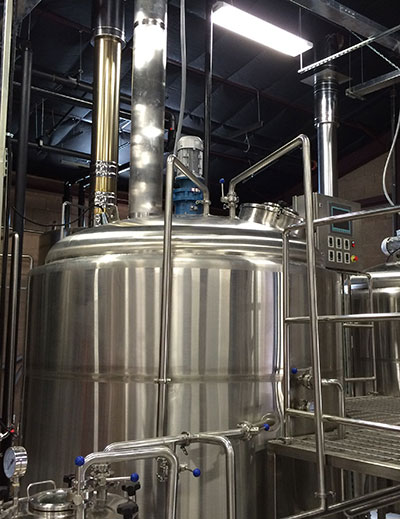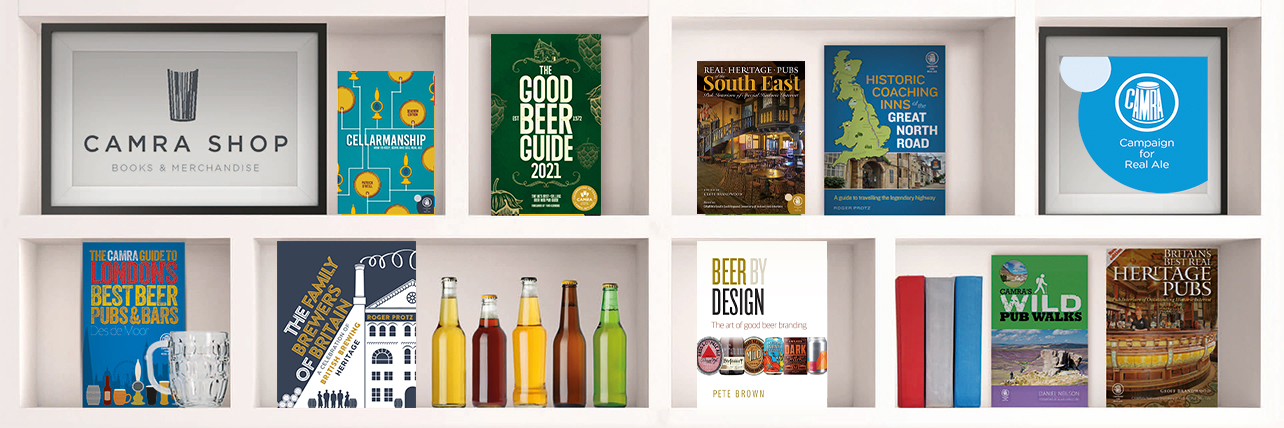Learn & Discover
Learn & Discover
An introduction to fire brewing
What can seared steak, coffee, chocolate, toasted marshmallows, and beer all have in common? Ruvani de Silva introduces the theory and practice of preparing beer for fermentation using an open flame. From ancient art to modern craft, fire brewing represents the origins of all beer and provides an opportunity to recreate some of the scents and flavours we all can easily recognise from familiar and much loved food and drinks.
Ruvani de Silva
A travel-loving beer writer, with a host of bylines, Ruvani blogs about beer in Central Texas and beyond, as Craft Beer Amethyst. A vocal advocate for diversity, equity and inclusion in beer. As a British South Asian woman living in Texas, Ruvani brings a unique voice to the world of craft beer.
An introduction to fire brewing
What can seared steak, coffee, chocolate, toasted marshmallows, and beer all have in common? Ruvani de Silva introduces the theory and practice of preparing beer for fermentation using an open flame. From ancient art to modern craft, fire brewing represents the origins of all beer and provides an opportunity to recreate some of the scents and flavours we all can easily recognise from familiar and much loved food and drinks.
Ruvani de Silva
A travel-loving beer writer, Ruvani blogs about beer in Central Texas and beyond, as Craft Beer Amethyst.
What is fire brewing?
Fire-brewing is a rare example of a process that is exactly what it sounds like. If you have ever dabbled in home-brewing, you will already be familiar with this, the oldest way to make beer. If you have ever cooked a bowl of porridge, you will have used the same basic method by which beer was produced for many thousands of years prior to the Industrial Revolution.
Fire-brewing is the preparation of beer over an open flame. The process is essentially the same, whether you’re home-brewing on your kitchen stove or commercially brewing in one of the rare breweries that still employs this historic method. Both the mash and the boil are conducted over a direct heat source, with the temperature controlled by hand. Checking the temperature regularly is essential to ensure that it is hot enough that the starches are converted to sugars but not so hot that the wort is scorched. Historically this task, with its similarity to cooking, fell to women, and prior to the explosion of commercial breweries in the Fifteenth Century, most brewers were female.
What is fire brewing?
Fire-brewing is a rare example of a process that is exactly what it sounds like. If you have ever dabbled in home-brewing, you will already be familiar with this, the oldest way to make beer. If you have ever cooked a bowl of porridge, you will have used the same basic method by which beer was produced for the many thousands of years prior to the Industrial Revolution.
Fire-brewing is the preparation of beer over an open flame. The process is essentially the same, whether you’re home-brewing on your kitchen stove or commercially brewing in one of the rare breweries that still employs this historic method. Both the mash and the boil are conducted over a direct heat source, with the temperature controlled by hand. Checking the temperature regularly is essential to ensure that it is hot enough that the starches are converted to sugars but not so hot that the wort is scorched. Historically this task, with its similarity to cooking, fell to women, and prior to the explosion of commercial breweries in the Fifteenth Century, most brewers were female.

“Fire-brewing is the preparation of beer over an open flame.
— Ruvani de Silva
Who Fire-Brews?
Fire-brewing is favoured by beginners as it is relatively cheap and easy to undertake – little specialised equipment is required and most home-brewers start out brewing beer in this manner. However, getting it right does require attention, precision and practice, especially when preparing fire-brewed beer on a commercial scale. This is one of the primary reasons that most commercial brewers now eschew fire-brewing in favour of steam or electrical heating systems which are much easier to control and produce much more consistent results, although the equipment is a lot more expensive.
These brewing systems both grew out of the Industrial Revolution and came to dominate beer manufacturing in the same way that the car replaced the horse and cart – centuries-old methods swiftly displaced by the efficiency of modern technology.
Who Fire-Brews?
Fire-brewing is favoured by beginners as it is relatively cheap and easy to undertake – little specialised equipment is required and most home-brewers start out brewing beer in this manner. However, getting it right does require attention, precision and practice, especially when preparing fire-brewed beer on a commercial scale. This is one of the primary reasons that most commercial brewers now eschew fire-brewing in favour of steam or electrical heating systems which are much easier to control and produce much more consistent results, although the equipment is a lot more expensive.
These brewing systems both grew out of the Industrial Revolution and came to dominate beer manufacturing in the same way that the car replaced the horse and cart – centuries-old methods swiftly displaced by the efficiency of modern technology.
“Historically this task, with its similarity to cooking, fell to women, and prior to the explosion of commercial breweries in the Fifteenth Century, most brewers were female.”
— Ruvani de Silva
The Maillard Reaction
There is, however, an element of fire-brewing that cannot be replicated by either steam or electrical brewing systems – the deliciously warm golden-caramel flavours and aromas that come from the Maillard Reaction.
This is the science bit – but we don’t need to make it complicated. When you grill a steak or sauté onions you can’t help but notice the warm, sweet, bready, caramelly browning characteristics the food takes on as it cooks over the open flame. This is the Maillard Reaction, and when you brew over an open flame, the exact same thing happens to the beer.
If you want to be technical, this is the result of a complex series of chemical reactions between the carbonyls of reactive sugars and the amino groups of amino acids, with melanoidins (brown nitrogenous polymers) as the final product. Basic home-brewing, thankfully, does not require a full understanding of these chemical interactions any more than home cooking does. However, once you move into the scaled-up world of commercial brewing, understanding and controlling the Maillard Reaction is crucial to producing the flavours and aromas that you desire in your beer.
The Maillard Reaction
There is, however, an element of fire-brewing that cannot be replicated by either steam or electrical brewing systems – the deliciously warm golden-caramel flavours and aromas that come from the Maillard Reaction.
There is, however, an element of fire-brewing that cannot be replicated by either steam or electrical brewing systems – the deliciously warm golden-caramel flavours and aromas that come from the Maillard Reaction.
This is the science bit – but we don’t need to make it complicated. When you grill a steak or sauté onions you can’t help but notice the warm, sweet, bready, caramelly browning characteristics the food takes on as it cooks over the open flame. This is the Maillard Reaction, and when you brew over an open flame, the exact same thing happens to the beer.
If you want to be technical, this is the result of a complex series of chemical reactions between the carbonyls of reactive sugars and the amino groups of amino acids, with melanoidins (brown nitrogenous polymers) as the final product.
Basic home-brewing, thankfully, does not require a full understanding of these chemical interactions any more than home cooking does. However, once you move into the scaled-up world of commercial brewing, understanding and controlling the Maillard Reaction is crucial to producing the flavours and aromas that you desire in your beer.
Contemporary Fire-Brewing
The most well-known fire-brewed beer in the Twentieth Century came from Detroit’s Stroh Brewing. This historic brewery, dating back to 1850, marketed itself as ‘America’s only Fire-brewed Beer’, with successful advertising campaigns in the 1970s and early 1980s, but a series of poor business decisions led to the company’s collapse in 1999. Sadly, after Pabst’s recently revived Stroh branded beer it is no longer fire-brewed.
While very few contemporary commercial breweries fire-brew, those who do are deeply committed to the process of fire-brewing, the flavours they are able to create, and their old-style equipment. Milwaukee, Wisconsin’s Sprecher Brewing use an open flame to recreate the flavours founder Randy Sprecher’s enjoyed during his time in spent in Germany as part of his military service. In North-East Texas, Shannon Carter was inspired by traditional Irish beer styles to create his own fire-brew kettles for his namesake Shannon Brewing. While further south, in Red Rock, Texas, Jarle Lillemoen drew on his experience as a doctor of biochemistry to build his open-flame Wild Bunch Brewing brewhouse.
For these breweries, their use of fire-brewing technology is an (almost) unique selling point and a source of great pride. “The beauty of the Maillard reaction is that it creates unique flavours in the boiling step of the brew day, and those flavours and aromas come out later for the drinker to enjoy” says Jarle Lillemoen. Shannon Carter agrees, “The fire provides us a malt profile that is great to build upon. This profile produces amazing traditional malt-forward recipes…Plus, who doesn’t want to play with 1.2 million BTUs of fire?!”
Contemporary Fire-Brewing
The most well-known fire-brewed beer in the Twentieth Century came from Detroit’s Stroh Brewing. This historic brewery, dating back to 1850, marketed itself as ‘America’s only Fire-brewed Beer’, with successful advertising campaigns in the 1970s and early 1980s, but a series of poor business decisions led to the company’s collapse in 1999. Sadly, the Pabst’s recently revived Stroh branded beer is not fire-brewed at present.
While very few contemporary commercial breweries fire-brew, those who do are deeply committed to the process of fire-brewing, the flavours they are able to create, and their old-style equipment. Milwaukee, Wisconsin’s Sprecher Brewing use an open flame to recreate the flavours founder Randy Sprecher’s enjoyed during his time in spent in Germany as part of his military service. In North-East Texas, Shannon Carter was inspired by traditional Irish beer styles to create his own fire-brew kettles for his namesake Shannon Brewing. While further south, in Red Rock, Texas, Jarle Lillemoen drew on his experience as a doctor of biochemistry to build his open-flame Wild Bunch Brewing brewhouse.
For these breweries, their use of fire-brewing technology is an (almost) unique selling point and a source of great pride. “The beauty of the Maillard reaction is that it creates unique flavours in the boiling step of the brew day, and those flavours and aromas come out later for the drinker to enjoy” says Jarle Lillemoen. Shannon Carter agrees, “The fire provides us a malt profile that is great to build upon. This profile produces amazing traditional malt-forward recipes…Plus, who doesn’t want to play with 1.2 million BTUs of fire?!”











